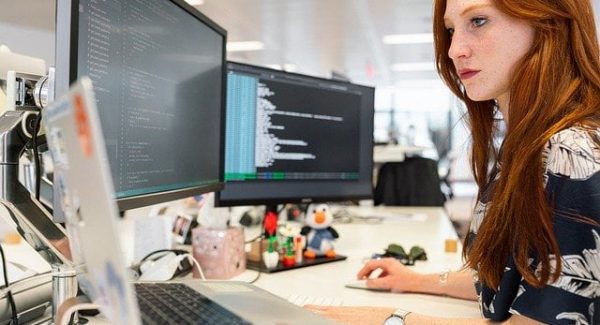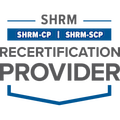- +1 902 932 7300
- Academy@roman3.ca
- Mon - Fri: 9:00am - 9:00pm
- 11 Opportunity Lane, Coldbrook Nova Scotia, Canada B4R 0A5
PSYCAP: Turning employees into high value assets
By W. Coby Milne
Troubles with the Workforce?
When you ask most businesses, what are the largest challenges you face when it comes to growth and staying competitive, they pretty much all say the same thing – Workforce challenges. In my work, I hear this over and over from businesses; large and small, across many sectors, in pretty much every area. Everyone seems to have trouble finding the talent they seek and filling roles with motivated and dedicated workers. I see many fingers pointed at millennials, the public schools system, out of touch post secondary programs, and a general breakdown of society as a whole. As a Workforce Specialist, I am not interested in short-term blaming, I am focused on long-term solutions. I understand that the situation businesses are in is frustrating and increasingly concerning as our current workforce gets closer to retirement with every passing day, but we need to be solution-focused. How can we improve the workforce that we have now, so that we have to tools we need to make sustainable change for the future?
While I don’t have a magic answer or a silver bullet for this particular problem, I do have an idea of how we can start to make some changes that will lead us to where we want to be. We need to start to invest in the Psychological Capital (PSYCAP) of our employees and properly prepare them for the complex nature of the workforce. Work has always been complicated and demanding, but since 2020 it has only grown more complex and challenging.
A little preamble
For several years I researched and taught workforce navigation and skill development to unemployed and under-employed people in rural Nova Scotia as part of an interdisciplinary team. My students were going through different levels of career transition and they were all trying to be more competitive job candidates and stronger employees. My students were probably the most diverse group that you could imagine in terms of education, skill set, cultural background, disabilities, age, and career goals. So my programs had to meet a universal need unlike no other.
The focus on Psychological Capital in my work came from a shift in the culture when we realized that career development training was making good job seekers, not good employees. After copious amounts of academic research and a wide range of business needs assessments, we found that in order to increase the capacity and employability of employees, we needed to increase their value add (capital) in the job market. This is the basis for the concept of Human Capital: the economic value of an employee’s skill set. So the new question was the simplest, yet most difficult: How? How can we increase people’s capacity and employability, in a meaningful and efficient way?


Investing in people
This is what led us to the value of organizations investing in the Mastery of their employees and led to the discovery of concepts of Psychological Capital from a workforce perspective. Psychological Capital is simply understood as the positive union between the cognitive skills of Hope, Efficacy, Resilience, and Optimism (easily remembered as HERO). The idea is that if you can build and strengthen these skills in your team, you can significantly increase your competitive advantage in the marketplace, embody the concept of “Work Smarter, Not Harder”, and considerably increase performance and productivity.
In case studes from our pre-employment training programs, we found incorporating meaningful development of PSYCAP was a real game changer in terms of creating significantly more employable employees. Our employment rate for students jumped from around 65% to a little over 80%. But even more significant was our employment retention (the ability to keep a job for at least the length of the probation period), which jumped from 68% to 93%! This success rate was consistently reinforced with multiple iterations of our training program, delivered to almost 150 students over a two year period.
With a focus on Psychological Capital, the graduates of our program were more quickly promoted than in past programs, they reported much higher job satisfaction, were more dedicated to their work, and were able to be trained much faster.
How do you build these skills?
This is a much more complex question. In building our program, curriculum, and research models, we were fortunate to have a diverse team. We had people with extensive HR backgrounds, expertise in business services and needs assessments, and most importantly, curriculum and cognitive skill development. The specific details are too much to include in this article. However, Roman 3’s curriculum design team I made up of very similar skill sets, and even a few of the same people. If you would like to see how we can help you build PSYCAP in your team, book a free consultation with us.
What I can share at this time are our guiding principles. These were the foundations for every step along the way.
Hope Theory – (Hope)
Create a culture that supports two basic, yet essential ideas.
- Pathways – There is more than one way to achieve a goal and success looks different to different people.
- Agency – You have the capacity to effect change. Your actions and efforts matter; in fact they are often all that does
Experiential Learning (combined with Flooding) – (Efficacy)
While I’ve covered this elsewhere (Three Essential Elements for Effective Training), it’s worth revisiting the three key approaches to adult learning:
- Rote learning– focuses on learning specific content, understanding steps and processes, for example, how to format a resume.
- Reflective Learning–working with information and ideas to get students really thinking about themselves, their pasts and their biases. This approach provides perspective and hopefully will encourage growth. A sample of reflective learning would be considering how negative thinking and biases hurt mental resilience.
- Experiential Learning–where students are immersed in the learning and experiencing the value of the tips, knowledge and understanding they’ve gained. One example of experiential learning would be mastering the steps for high level problem solving by making a survival plan after a theoretical plane crash.
Our program utilized the best learning approaches to meet the students’ needs in achieving our training outcomes. We wouldn’t use experiential learning just because it was fun, we would only use it if it had real value in helping learners learn. We combined experiential learning with a process used in Cognitive Behavioural Therapy, called flooding. Flooding involves getting people to move out of their comfort zones by placing them in situations where they need to push themselves beyond their usual limits. An example might be building conflict resolution skills using specific scenarios and increasing the complexity of the scenes to go beyond the normal, typical situations they would commonly encounter. If they can handle the most challenging scenarios, then the everyday ones will seem easy by comparison. The principle is similar to practicing lifting weights that are heavier than you need to lift, so when you are lifting your targeted weight, it seems much easier.
Training to build PSYCAP is all about maximizing the potential of the employees. You don’t have to hire for talent if you can build it in house.
Let Yourself Fail – (Resilience)
We did a lot of research around Growth Mindset and rewarding the authentic effort over the achievement of results. Growth Mindset is a concept best described by researcher Carol Dweck, who said, “people believe that their most basic abilities can be developed through dedication and hard work—brains and talent are just the starting point. This view creates a love of learning and a resilience that is essential for great accomplishment.” The theory simply states that failure is a mindset, not an inevitable outcome. In a Growth Mindset, failing is not seen as the mistakes or the wrong choices we make. A failure is framed as letting the mistake or the wrong choice define us.
Realistic Expectations – (Optimism)
We may have been told things in life like, “if you can dream it, you can do it” or “shoot for the moon and even if you miss, you will end up among the stars.” These motivational quotes sound nice, but can do more harm than good. We need to accept the reality of our situations and be realistic with our optimism. Our role as trainers and educators is to help our students and employees recognize their strengths, assets, and professional value. But also realistically see their baggage, limitations and weaknesses. Our students need to know and accept all of these aspects of themselves as the cards they’ve been dealt. With this knowledge, they can start to play their best hand.
The Takeaway
We are making mistakes in the way we prepare and train our employees for the realities and complexities of the workforce. Like it or not, the old ways don’t work anymore. So if we want to create the dedication and capacity in our employees we need to start investing in them as Human Capital, which needs to start with their individual Psychological Capital.
Training to build PSYCAP is all about maximizing the potential of the employees. You don’t have to hire for talent if you can build it in house. Instead of being a hunter and gathering new talent, farm the talent you currently have and grow it to feed the success of your business and your efforts.


